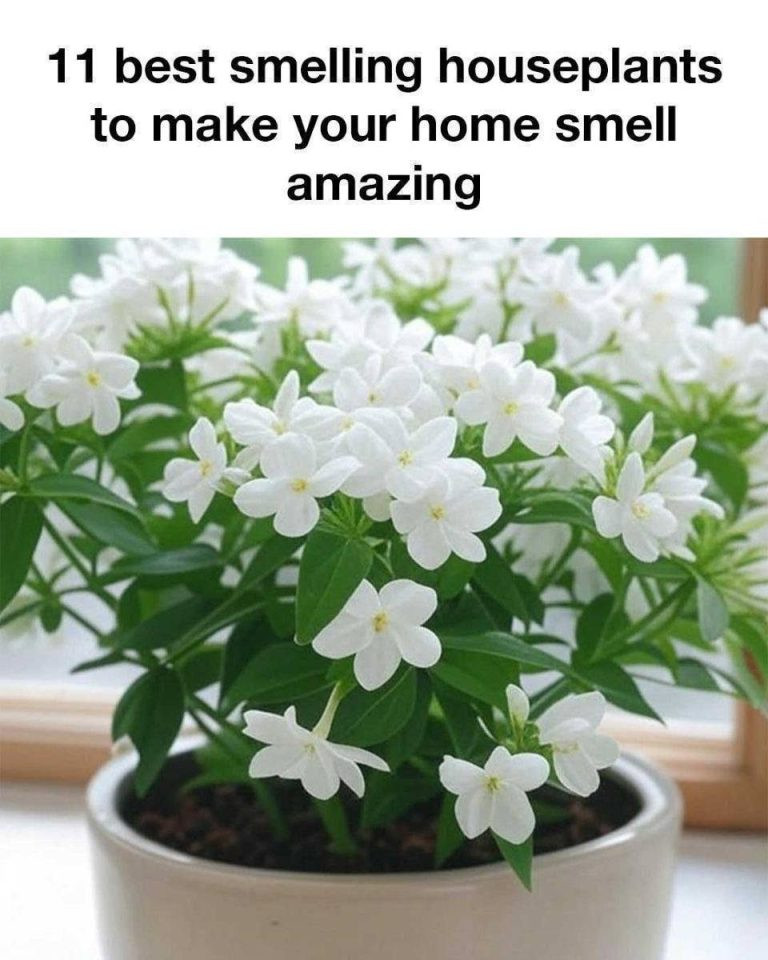ADVERTISEMENT
Introduction:
Tired of artificial air fresheners and candles that burn out too quickly? Nature offers a better solution — fragrant houseplants. These beautiful botanical additions not only purify the air but also fill your home with fresh, soothing, and invigorating scents all day long. Whether you love floral, citrusy, or herbal aromas, there's a houseplant out there that can elevate your indoor atmosphere naturally. Let’s explore the top 11 best-smelling houseplants that will make your home smell heavenly!
Ingredients: (aka Your Fragrant Plant List)
Jasmine – Sweet, romantic floral scent, especially potent in the evening.
Lavender – Calming and herbal, perfect for bedrooms or relaxation zones.
Gardenia – Rich and creamy floral aroma with glossy green leaves.
Eucalyptus – Clean, minty scent that also repels bugs.
Mint (Peppermint or Spearmint) – Crisp and refreshing, great for kitchens.
Citrus Trees (Lemon, Orange, or Lime) – Zesty and bright, ideal for sunny rooms.
Scented Geraniums – Wide range of fragrances like rose, lemon, or even chocolate.
Orchids (Especially Oncidium) – Subtle yet exotic floral fragrance.
Hoya (Wax Plant) – Sweet, almost honey-like aroma, especially when blooming.
Rosemary – Earthy and savory scent, also useful in cooking.
Plumeria – Tropical floral notes reminiscent of island vacations.
Instructions: (How to Grow and Care for Them)
Choose the Right Spot:
Most fragrant plants thrive in bright, indirect sunlight. South- or east-facing windows are best.
Water Carefully:
Overwatering is the #1 killer of houseplants. Water only when the top inch of soil is dry, and ensure pots have drainage.
Provide Humidity (When Needed):
Plants like orchids, hoyas, and gardenias love humidity. Mist them or use a pebble tray.
Feed Them Right:
Use a balanced houseplant fertilizer during the growing season (spring/summer) for optimal blooms and fragrance.
Prune Regularly:
Keeps your plants healthy and encourages more flowers — and therefore, more scent!
Serving and Storage Tips: (Displaying and Preserving the Scent)
Place Strategically:
Put scented plants in high-traffic or relaxing areas like the living room, kitchen, or bathroom.
Group for Impact:
Create a mini fragrant garden by clustering a few plants together — it intensifies the scent and looks gorgeous.
Refresh the Air Naturally:
Open windows occasionally to circulate the plant's natural aroma throughout your home.
Keep Blooms Healthy:
Remove spent flowers to encourage new growth and continuous fragrance.
Variations: (Customizing Your Indoor Scent Garden)
Seasonal Scents:
Switch between heavier floral scents in winter (like gardenia or jasmine) and lighter, citrusy plants in summer.
Mix with Herbs:
Add basil, thyme, or lemon balm for a dynamic and edible fragrance combination.
Aromatherapy Corners:
Create zones — a lavender and rosemary nook for stress relief, or a citrus and mint area for energy.
FAQ:
ADVERTISEMENT
